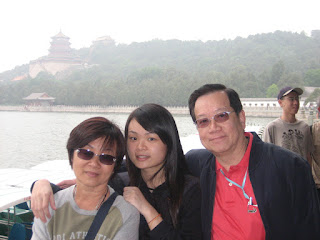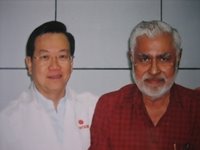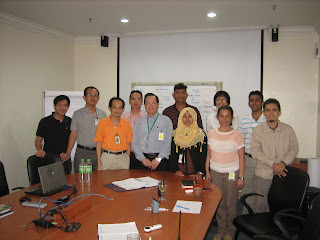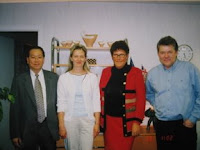Wrong decision by hospital
 director of the Malaysian Rubber Export Promotion Council (MREPC) in Washington,had written to Johns Hopkins about the new class of safer latex gloves that had led to a decline in latex sensitization and allergic incidences, informed the American media, and travels around the country to talk about Malaysia's superior latex gloves.
director of the Malaysian Rubber Export Promotion Council (MREPC) in Washington,had written to Johns Hopkins about the new class of safer latex gloves that had led to a decline in latex sensitization and allergic incidences, informed the American media, and travels around the country to talk about Malaysia's superior latex gloves.She said that new technology adopted by Malaysian manufacturers since the late 1990’s had drastically reduced the presence of residual proteins in latex gloves to less than 50 micrograms per decimeter.
The use of such gloves has been shown by a number of independent hospital studies in the United States, Canada and Europe to not only vastly reduce sensitization and incidence of allergic reactions, but more importantly, latex allergic individuals wearing non-latex gloves can now work alongside their colleagues using these improved latex gloves and suffer no ill effects.
A recent study funded by the US Centers for Disease Control and the National Institute of Occupational Safety and Health found that latex gloves leakage rate (5.6 percent) was much lower than surgical gloves made of nitrides (9.3 percent) or polychloroprene/neoprene (7.4 percent).
"Allergy issues should be overcome not by banning latex gloves but by adopting the policy of using only low-protein, low-powder or powder-free latex gloves, while allergic individuals should use quality non-latex gloves as has already been done by other hospitals in the US, Germany and Finland," she said.
Yip said there was no evidence that anaphylactic shock had ever occurred with today’s low-protein, low or powder-free latex gloves when such a policy was adopted.
In addition, Mayo Clinic, a leading American medical institution, recently conducted a study that found the use of low protein latex gloves resulting in savings of US$200,000 per year
More than 3,300 physicians, scientists and researchers and 46,000 allied health staff work at Mayo Clinic, which has sites in Rochester, Minnesota, Jacksonville, Florida, and Scottsdale/Phoenix, Arizona.
Collectively, the three locations treat more than half a million people each year.
Yip said Johns Hopkins' decision to eliminate latex gloves from its hospital could unnecessarily increase its hospital glove costs by 50 percent.
While US imports of latex gloves grow steadily every year, challenges lie ahead for the MREPC as Harbor Hospital in Baltimore and Shriners Hospital for Children in Sacramento, California, opt to go latex-free.
In 2006, the US imported 18.4 billion pairs of rubber gloves worth US$1.2 billion, with 9.2 billion pairs worth about US$0.6 billion from Malaysia. This was a steady growth from 2004 when the US imported 17.6 billion pairs of gloves worth US$1.03 billion, with 8.6 billion pairs worth about US$0.5 billion from Malaysia, according to figures from Global Trade Atlas.
You are at the site for answers and solutions to all your problems in natural rubber latex processing and manufacturing of industrial, household and medical gloves, condoms, catheters, baby teats and baby pacifiers, toy balloons, latex foam products, latex threads etc.

















































.jpg)
.jpg)



.jpg)
.jpg)
.jpg)
.jpg)
.jpg)
.jpg)
.jpg)
.jpg)
.jpg)
.jpg)
.jpg)
.jpg)
.jpg)
.jpg)
.jpg)
.jpg)
.jpg)
.jpg)












































